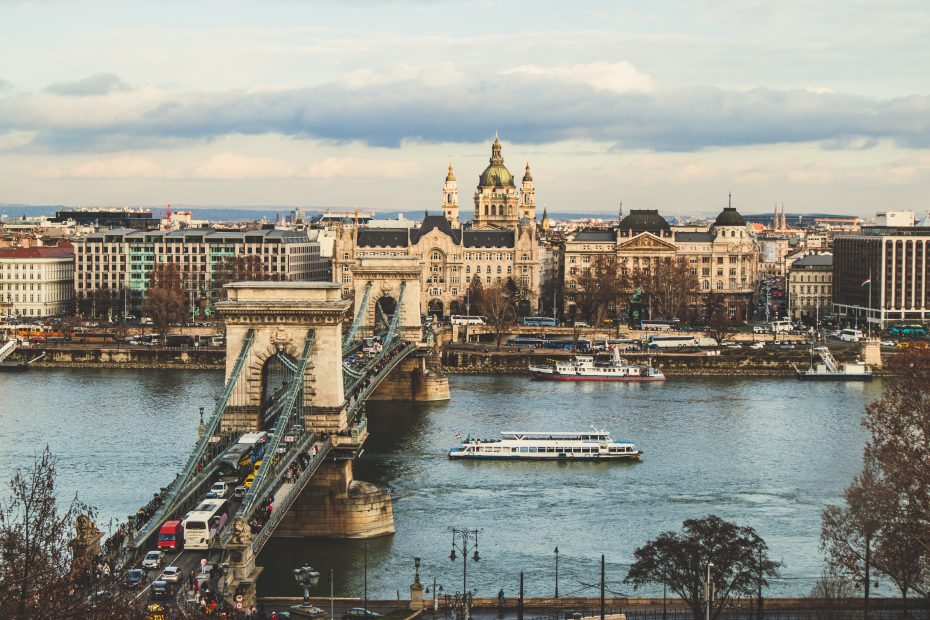Table of Contents
Introduction
With an eclectic mix of architectural marvels, therapeutic thermal waters, epicurean delights and vibrant folk traditions, Hungary offers visitors a rich cultural experience. From the grand boulevards of Budapest to the shimmering Lake Balaton, this Central European country unveils breathtaking landscapes alongside captivating history.
Let’s explore some of the top sights and experiences in Hungary, from its romantic capital to the holiday charm of Lake Balaton. By the end, you’ll have a good grasp of what makes Hungary such an alluring destination.
Budapest: The Queen of the Danube
Spread across both banks of the Danube River, Budapest is an enthralling capital steeped in history. The city was formed in 1873 by uniting the towns of Buda, Pest and Óbuda. Today, it captivates with Neo-Gothic parliament buildings, Ottoman-era thermal baths and tree-lined boulevards.
A walk through the Buda side reveals medieval streets winding up to the sprawling palace complex and Matthias Church. Meanwhile, Pest charms with quirky “Ruin Bars”, hip cafes and the largest synagogue in Europe. Don’t miss the panoramic views from the 19th-century Citadella atop Gellért Hill.
Among the long list of highlights are the Danube riverfront, St. Stephen’s Basilica, Fisherman’s Bastion, Hungarian State Opera House, Central Market Hall and the Jewish Quarter. Spend at least 3-4 days exploring this treasure trove!
Lake Balaton: Hungary’s Summer Retreat
About 75 miles southwest of Budapest lies Lake Balaton, the largest freshwater lake in Central Europe. Ringed by quaint villages and summer resorts, this scenic oasis offers a delightful countryside escape from the city.
Along the lake’s serene shores are stunning yacht harbors, pristine beaches and picturesque wetlands. For the best views, take the ferry to Tihany Peninsula and hike up to the abbey. Don’t miss the lavender fields and local wineries around the northern Badacsony region either.
The lake’s most bustling resort town is Siófok, with its vibrant waterfront promenade, while Keszthely boasts baroque mansions and a massive castle. For a quiet retreat, head to Balatonfüred and unwind at the thermal baths.
Exploring the Great Hungarian Plain
Beyond Budapest, the landscape unfolds into the boundless Hungarian Plain, or Alföld, covered in fertile croplands, pastures and prairie. Here, small towns and villages dot the endless fields and farms.
The Hortobágy region is great for witnessing traditional herding at a csárda ranch. The Matyó villages west of Eger dazzle with intricate folk embroidery and costumes. Meanwhile, the southern Plain along the Tisza River hides historic cities like Szeged with its ornate university and pedestrian promenade.
To experience the Plain’s natural beauty, relax by Lake Tisza or explore Kiskunság National Park, home to sandy dunes and rare birds. Don’t miss sampling fruit brandy pálinka and full-bodied local reds too!
Taking the Waters at Hungary’s Thermal Spas
No trip to Hungary is complete without visiting at least one thermal spa, fed by the country’s thousands of natural hot springs. Dating back to Roman times, these healing waters draw visitors from around the world.
Budapest boasts several historic bathhouses, including the 16th-century Turkish-style Rudas Baths and the art nouveau Gellért Baths with stained-glass windows.
Outside the capital are spa towns like Hévíz, where you can bathe in Europe’s largest thermal lake, and Bük with over 30 indoor and outdoor pools. Szeged also stuns with the vast Szegedi Élményfürdő, while Egerszalók is renowned for its saltwater spas.
Whether you’re looking to relax, heal your joints or simply experience this integral part of Hungarian culture, the thermal baths promise a rejuvenating soak.
Savoring Hungary’s Unique Cuisine
Hungarian cuisine reflects a rich cultural fusion, with influences from Slavic, Austrian and Turkish traditions. Be sure to try classics like goulash stew, chicken paprikash brightened with bell peppers, palacsinta crepes and dobos torte.
In Budapest, enjoy a traditional meal at a local family restaurant before experiencing the bustling Great Market Hall. Outside the capital, sample freshwater fish along Lake Balaton or spicy salami at a csárda inn on the countryside.
Don’t leave Hungary without raising a toast with sweet Tokaji wine, fiery pálinka brandy or craft beers from one of Budapest’s “ruin pubs”!
Conclusion
From Art Nouveau architecture to crimson paprika stews, Hungary rewards visitors with a treasure chest of experiences.Whether you’re exploring Budapest’s hip nightlife or biking around Lake Balaton, you’ll never run out of spectacular landscapes and cultural encounters. Add thermal bath soaks, world-class wines and delectable cuisine into the mix, and you have all the ingredients for an unforgettable Hungarian getaway. Ready to start planning your trip?
5 FAQs about Traveling in Hungary
What is the best time of year to visit Hungary?
Late spring and early autumn bring pleasant weather, fewer crowds and lower prices compared to the peak summer months.
What are the top things to do in Budapest?
Top experiences include admiring the Neo-Gothic Parliament building, soaking in the Széchenyi Thermal Baths, exploring Castle Hill, taking a Danube River cruise and enjoying the restaurants and nightlife.
Where should I stay around Lake Balaton?
The lively southern shore has resort towns like Siófok while the northern side offers quiet retreats like Balatonfüred and Tihany. Keszthely and Hévíz are also great home bases.
What is Hungary’s currency and how to tip?
The official currency is the Forint (Ft). At restaurants, a 10-15% tip is customary if service was good. Tipping taxis, hairdressers, etc. is optional.
How do I get around Hungary?
Travel between cities by train or bus. Budapest has an extensive public transport system. Outside major hubs, you’ll need a rental car to comfortably explore the countryside.
